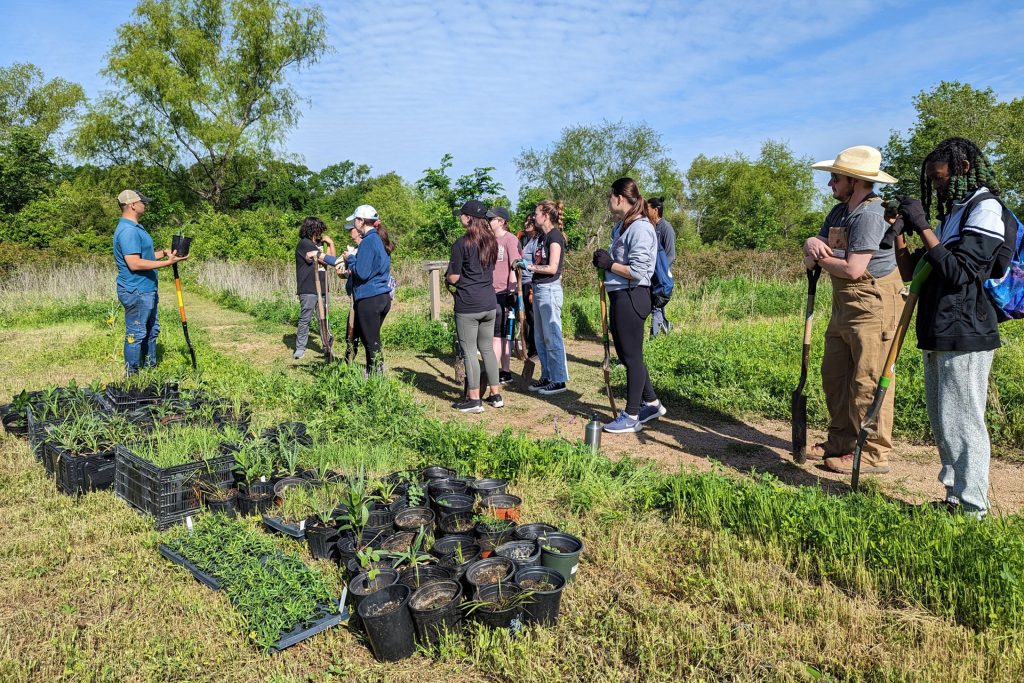
Science for all: CSU ranks among top institutions for public science
Original article by Jayme DeLoss can be found here in CSU Source

Grand challenges like climate change, water quality and air quality affect us all, and people-powered science enables all members of society to be part of the solution.
Colorado State University has established a reputation for participatory science – sometimes called public or citizen science. In a peer-reviewed study of global scientific output, CSU ranked fourth among significant institutions contributing to citizen science research, based on totals of published studies.
CoCoRaHS – the Community Collaborative Rain, Hail and Snow Network – and CitSci are two of the initiatives that have put CSU on the map for public science.
CoCoRaHS started 25 years ago with rain gauges in Fort Collins’ backyards and has grown to include more than 26,000 volunteers in every U.S. state, Canada, Puerto Rico, the U.S. Virgin Islands, Guam and the Bahamas. Precipitation can vary greatly from one side of a town to the other, and the volunteers take daily measurements that constitute the single largest source of daily precipitation measurements in the U.S., providing valuable data used by the National Weather Service, meteorologists, and farmers and ranchers.
CitSci, an organization based at CSU’s Natural Resource Ecology Laboratory in the Warner College of Natural Resources, builds and maintains CitSci.org, an online platform that provides free tools and resources for public science projects. Since its launch in 2007, CitSci.org has supported more than a thousand community-driven projects involving more than 15,000 participants who have contributed nearly 2 million scientific measurements around the world. They monitor water quality to inform policy, investigate new crops for regenerative agriculture and study how climate change is affecting wildlife, among other observations.
“We envision science by the people, for the people and with the people,” said Greg Newman, co-founder and director of CitSci.
SOURCE asked Newman a few questions about CSU’s leadership in democratizing science.
What makes CSU a leader in public science?
All of CSU’s work doing public science and studying this growing global movement has led to our recent ranking. Our land-grant mission drives us to lead through engagement, collaborating with communities and developing cutting-edge resources to meet their needs. We also lead through scholarship to advance the field, including by publishing peer-reviewed articles and holding leadership roles with the Association for Advancing Participatory Sciences – formerly the Citizen Science Association.
CSU has a culture of collaboration and actionable science for decision-making in the real world. With CSU Spur in Denver, CSU is taking its land-grant mission to the next level by building an entire campus that is public focused and delivering public science engagement opportunities. To my understanding, no other university is doing that.
What is CitSci? How does it work?
CitSci is an organization supporting community-driven, people-led initiatives through consulting, a cloud-based platform and mobile apps. We help groups crowdsource data collection to create actionable datasets related to things they are interested in or concerned about. Every day new projects are started and new observations are made. It’s inspiring to see what people-powered science can accomplish.
Do non-scientists use the platform?
Yes. Those who collect data are members of the public, regardless of scientific background. Every initiative provides some degree of training for the public to conduct these studies. We also play matchmaker, connecting community-based initiatives with university expertise where it is helpful.
What are some examples of projects facilitated by CitSci?
We’re working with The Land Institute to crowdsource our understanding of perennial grains for regenerative agriculture. We’re engaging the public in growing novel perennial grains in 48 states. This is an example of how public science can inform decision-making to create sustainable agroecosystems and feed our growing population.
CSU Civil and Environmental Engineering Professor Sybil Sharvelle leveraged CitSci as a platform for her Off the Roof study of microbial pathogens in rain barrel-collected water. The project engaged homeowners with different roof types in four different cities – Baltimore, Fort Collins, Miami and Tucson – to study the quality and characteristics of the water collected from residential rooftops in rain barrels for use on landscapes.
We created a branded mobile app for Leave No Trace where volunteers can collect data for multiple projects, including trail-use conditions on public lands and trash in the environment. These data are used to prioritize where to spend staff time and resources.
“Public science changes the narrative from science is only done by academics to science can be done by everyone. It provides agency for all members of society to be scientists. It’s our belief at CitSci that we can best solve grand challenges when we engage all sectors of society in the study of those challenges together.”
— Greg Newman, co-founder and director of CitSci
What’s next for CitSci?
We’re applying the public science approach to the building of our own platform. Our new Volunteer Distributed Developer program engages computer science volunteers in developing the next set of CitSci software capabilities. Through this program, students and new software engineers interact with seasoned and retired developers in a collaborative environment where everyone learns from everyone else.
We’re also actively working to engage our student body, faculty and alumni by integrating participatory science into the entire culture of CSU. We envision CSU becoming a “participatory science campus” where anyone on campus, from faculty developing curricula to students submitting observations, can participate.
Finally, we are laying the groundwork to establish the Center for Participatory Science at CSU to expand our ability to serve the global community.
Why is public science important?
Public science changes the narrative from science is only done by academics to science can be done by everyone. It provides agency for all members of society to be scientists. It’s our belief at CitSci that we can best solve grand challenges when we engage all sectors of society in the study of those challenges together.